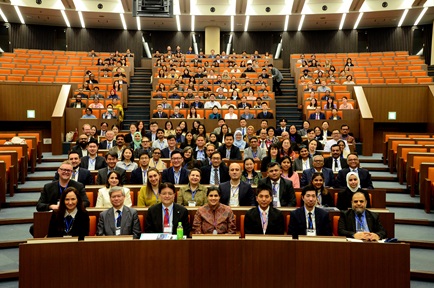Don't bank on flexi-work guidelines for better work-life balance
Resolving Singapore’s culture of overwork will take more than this first salvo.
The writing on the wall is clear.
Singaporeans have long been a largely overworked, stressed and unhappy lot. National surveys have reported that seven out of 10 Singaporeans feel overworked. Four out of 10 are ready to call it quits or to find alternatives that offer better work-life balance.
Worse, we are only the second most overworked city after Japan and have the lowest employee engagement levels according to a recent Gallup poll.
So, when the Government finally announced guidelines for flexible work arrangements (FWA) will come into effect from December, there was a palpable sense of redemption from those aggrieved segments of the workforce about how they may finally be liberated.
Decades of being always ready to respond to clients and customer needs 24/7 has led to a poor work-life balance and lower job security. Employees welcomed this strategic response to their clamour and a potential end to their work-related woes.
Reactions to the direction set by the Government in formalising a set of guidelines on FWA were upbeat, given this positive emphasis on worker well-being and engagement. The signal is clear: Singapore needs an engaged workforce that enjoys a work-life balance on a par with the most productive and advanced economies of the world.
The move is also in line with its long-term plans to improve the environment, economy, and the health of the larger community.
It takes two to tango
Not so fast.
Let's not forget one more party is involved in this equation: employers. Against the backdrop of a decades-long digital disruption and rapid restructuring since Covid-19 hit, many organisations have come under constant pressure to run an efficient and
profitable operation, manage a global network of customers and stakeholders, while keeping their costs low.
Having to embrace FWA will mean that many of our firms that are already struggling to cope with existing challenges will be further saddled with the burden of a business process transformation. This may be a sizeable group when only 68 per cent of firms
offer at least one FWA in 2023, down from the pandemic high of 90 per cent in 2020.
In Singapore, almost half of our gross domestic product comes from the nearly 300,000 small and medium-sized enterprises (SMEs) which also employ nearly three-quarters of our workforce. This segment is already in a contractionary mode for the fifth straight
quarter, and is grappling with rising wage costs and a lack of resources and skills according to an OCBC SME Index released in April.
Then there are businesses that are by nature labour-intensive and expected to be open round the clock such as food and beverages, healthcare, construction and logistics. FWA would pose unique challenges to such businesses with roles that do not support
flexi-work.
Such businesses can ill-afford approving many of the submitted FWA requests due to their special characteristics and needs, and may be unfairly penalised or cast as regressive workplaces. They, in turn, would have difficulty recruiting suitable candidates
to meet their basic operational needs, further compounding their manpower woes.
From an employee perspective, it may not be all that rosy either. For a start, flexible work is a double-edged sword. Doing away with synchronous work means the talent pool can be expanded beyond our boundaries to countries with a cheaper source of labour
with the help of digital tools easily and at no additional cost.
Workers must also change their mindsets to make the best use of FWA since flexi-work does not automatically translate into work-life balance. Traditional attitudes towards working long hours just to create an impression of "being at work" and overcoming
deeply ingrained work habits may be issues that need to be addressed to realistically achieve better employee well-being.
Business needs are deciding factors, not secondary considerations
There is no doubt that a more people-centric, inclusive, flexible workplace based on mutual trust and engaged, contented workers is the obvious expected outcome of FWA.
On the surface, this may be true, and it appears as though this can be realised through communication between the parties involved and ensuring a supportive infrastructure. But are these enough? Are there deeper issues that need to be addressed?
The adoption of FWA has offered significant benefits during the challenging pandemic years, but they are not universally suitable. For instance, Apple faced substantial pushback from employees when it mandated a return to the office for part of the week,
with staff expressing concerns over work-life balance and productivity.
Similarly, Goldman Sachs' return-to-office policy emphasised the need for in-person collaboration to sustain its high-performance culture, despite resistance from employees who had adapted to remote work. These examples underscore the complexities companies
face in balancing flexibility with operational needs.
Even then, the euphoria surrounding the FWA guidelines has succeeded in creating a perception that businesses must accede to all requests if they are to project a progressive employer image. Nothing is farther from the truth and employees need to remember
that business needs are the deciding factor, not a secondary consideration.
All things considered, the reality that the guidelines do not mandate FWA must be drilled in so that employee expectations can be set. While the guidelines direct firms to formally assess requests for flexible arrangements and acknowledge business
needs as important, there is bound to be pressure on employers and supervisors to implement these irrespective of whether they are ready or not.
The road ahead -- a word of caution
FWA singularly would most certainly not guarantee engagement and productivity improvements. It could actually take a turn for the worse if an organisation already has an issue with poor worker attitudes and disengagement. Rushing into FWA before fixing
these structural problems will only aggravate the situation.
Businesses here already face longstanding challenges -- such as employee attitude, skills and productivity -- especially in the construction and IT and professional services domains. It is difficult to envisage that a quick implementation of FWA would
do anything to ease these concerns even if such arrangements can be realistically implemented in some sectors.
There are also jobs whose fundamental design defies flexi-work such as those in construction and healthcare that require a physical presence or contact with clients over long hours. There is little scope for flexibility in such roles. Will this lead to
us creating a second tier of jobs nobody wants?
The retail sector, for example, has struggled with remote work due to the necessity of on-site presence for customer service and inventory management. Meanwhile, the healthcare sector, requiring direct patient interaction, found remote work impractical
for roles like nurses and doctors.
Flexi-work can also fuel work-life conflict. Surveys by the Institute of Policy Studies in Singapore revealed that while many employees appreciated the flexibility of remote work, a significant number faced increased stress and difficulties in separating
work from personal life.
Similarly, a study by Microsoft's Work Trend Index highlighted global challenges, noting that remote workers often experience burnout and isolation. These findings highlight the importance of a balanced approach to FWA, considering both the benefits and
inherent limitations based on industry and job role specifics.
All these do not mean FWA is a hopeless endeavour but that there is so much more to be done before FWA can be widely implemented. Businesses would need to look at re-engineering their processes.
Redesigning jobs to allow for sufficient overlaps between roles and responsibilities and support redundancies is an alternative for businesses that face structural constraints in implementing work flexibility. Pooled resources, including technological
tools and manpower, may help smaller enterprises to meet expectations where they find themselves short on workers with the necessary skills. Intervention from business federations and consortia to enable such sharing, training and development and
effective mediation will be crucial.
But in this, both employers and employees would need to tread with caution and be realistic in their expectations of what FWA can do for them.
Professor Boh Wai Fong is vice-president (Lifelong Learning & Alumni Engagement) and president's chair in Information Systems at Nanyang Technological University's Nanyang Business School. Dr Thara Ravindran is research fellow at the same school.
Source: The Straits Times







